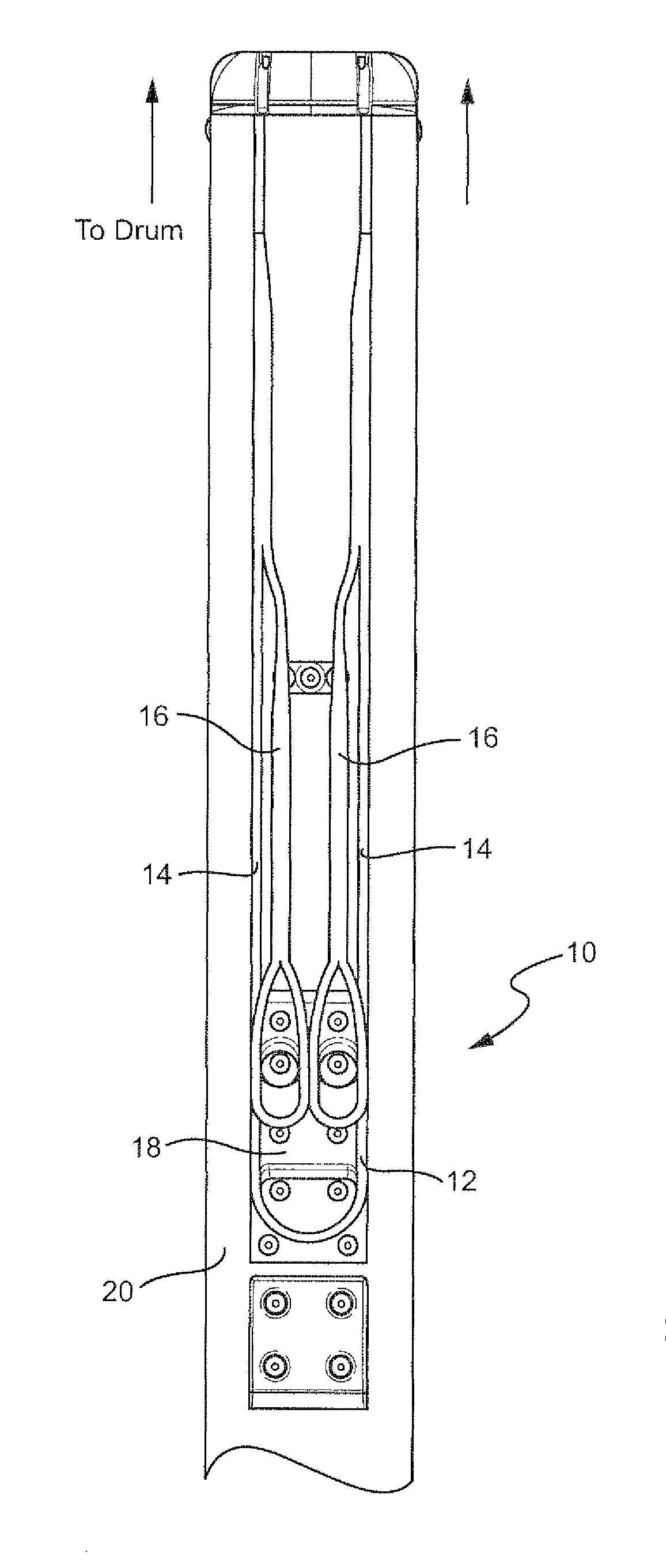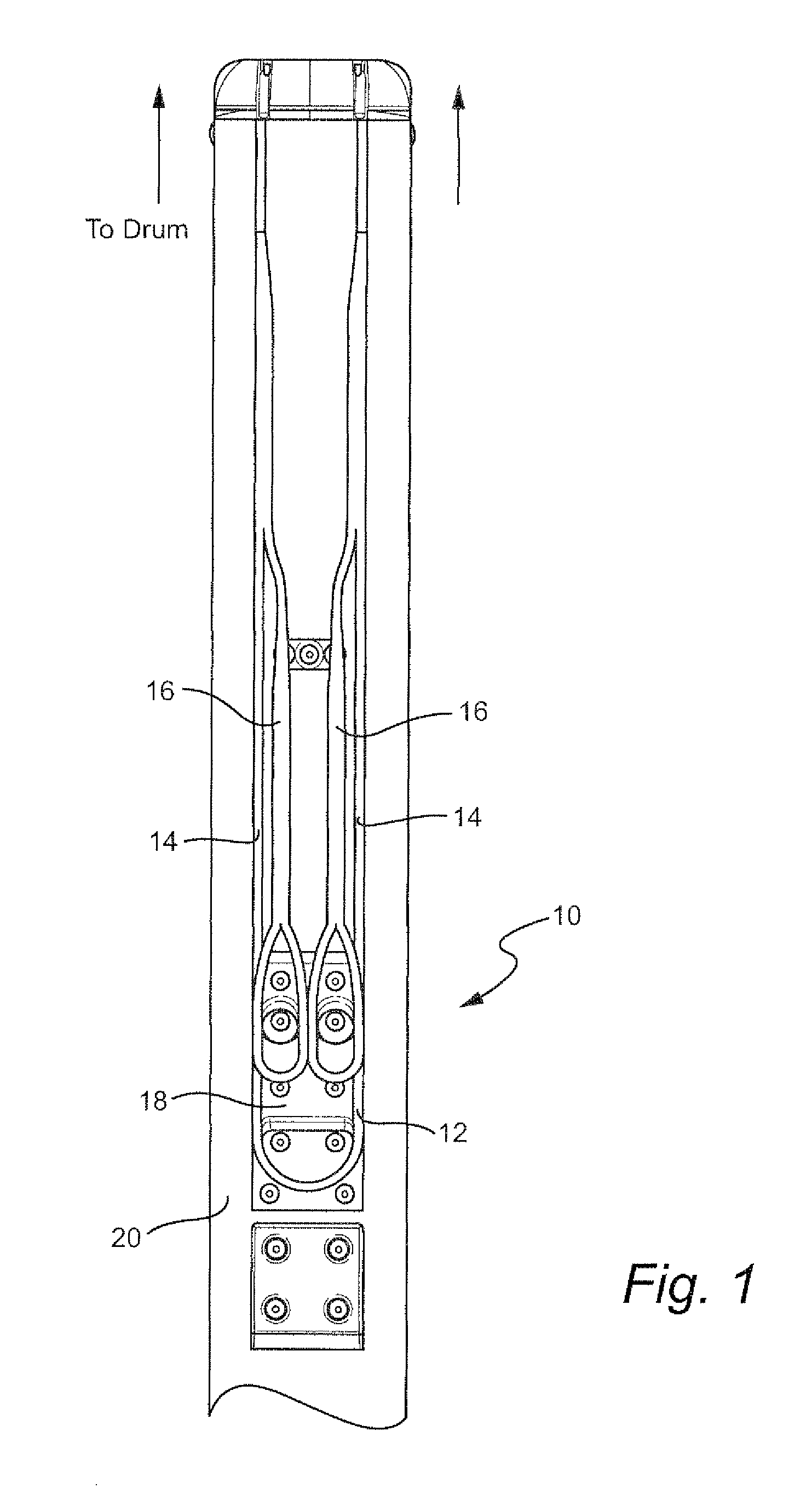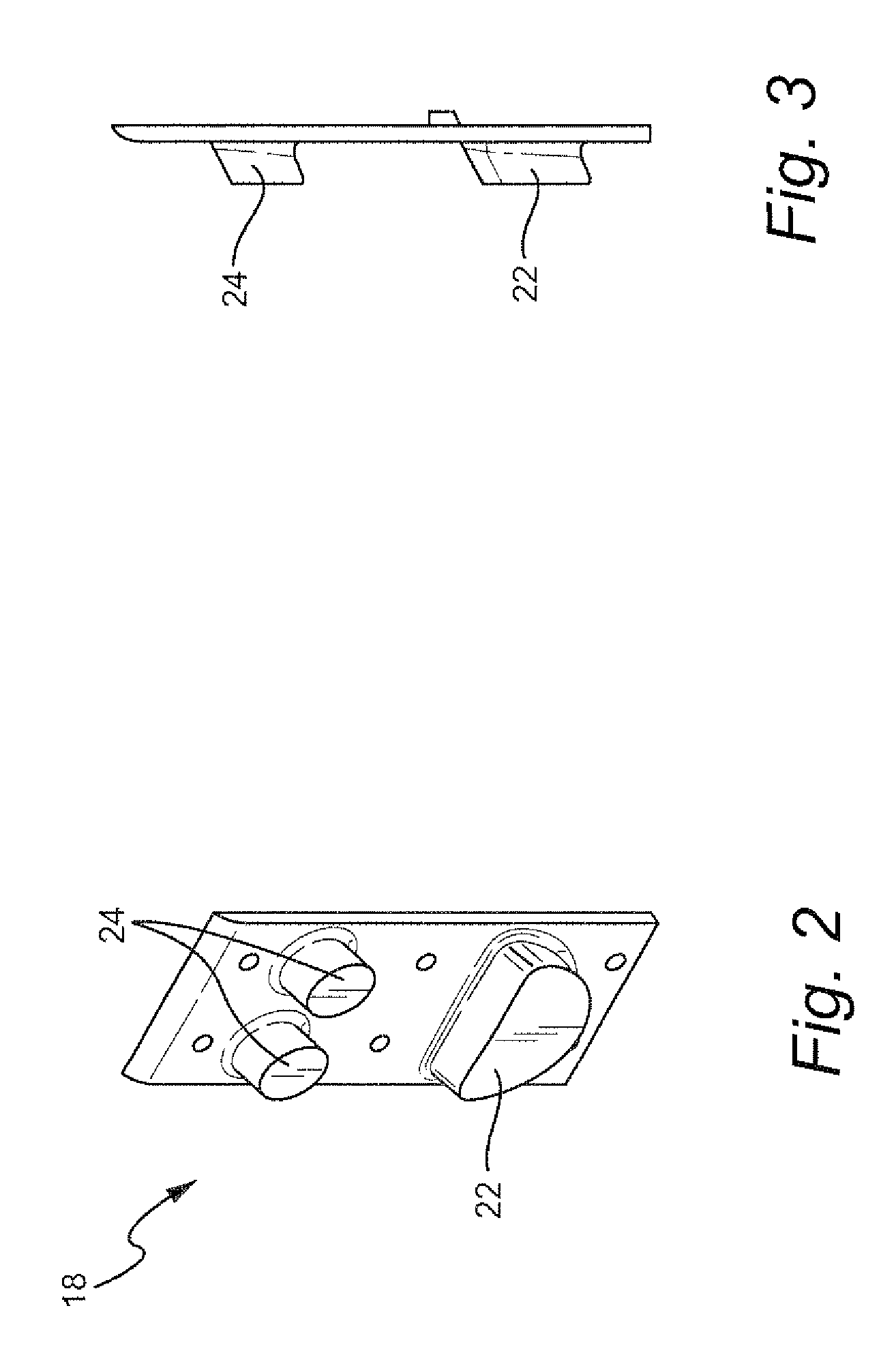Load equalizing rope termination and method
a rope termination and load technology, applied in the direction of buckles, snap fasteners, hoisting equipment, etc., can solve the problem of preventing the proper operation of the devi
- Summary
- Abstract
- Description
- Claims
- Application Information
AI Technical Summary
Benefits of technology
Problems solved by technology
Method used
Image
Examples
Embodiment Construction
[0016]With reference to FIG. 1, like a conventional redundant arrangement, a load equalizing rope termination includes a pair of rope ends 16. The rope ends 16 are attached at an opposite end to a rotating drum or the like. The ropes are configured such that either rope is independently capable of supporting the load, thus providing an added margin of safety in the event that one of the ropes breaks.
[0017]The rotating drum or the like may be fixed and the load movable at the distal ends of the ropes; or the drum may be attached to the movable load and move with the load with the distal ends of the rope fixed; or a combination of both. In a preferred arrangement, the drum is fixed, and the load, such as a work platform or the like, is restrained to move along a load path (e.g., with wheels on rails). If the ropes 16 are not identical in length, one of the ropes will carry a disproportionate share of the load. This is particularly so if the ropes are high in stiffness such as wire rop...
PUM
 Login to View More
Login to View More Abstract
Description
Claims
Application Information
 Login to View More
Login to View More - R&D
- Intellectual Property
- Life Sciences
- Materials
- Tech Scout
- Unparalleled Data Quality
- Higher Quality Content
- 60% Fewer Hallucinations
Browse by: Latest US Patents, China's latest patents, Technical Efficacy Thesaurus, Application Domain, Technology Topic, Popular Technical Reports.
© 2025 PatSnap. All rights reserved.Legal|Privacy policy|Modern Slavery Act Transparency Statement|Sitemap|About US| Contact US: help@patsnap.com



